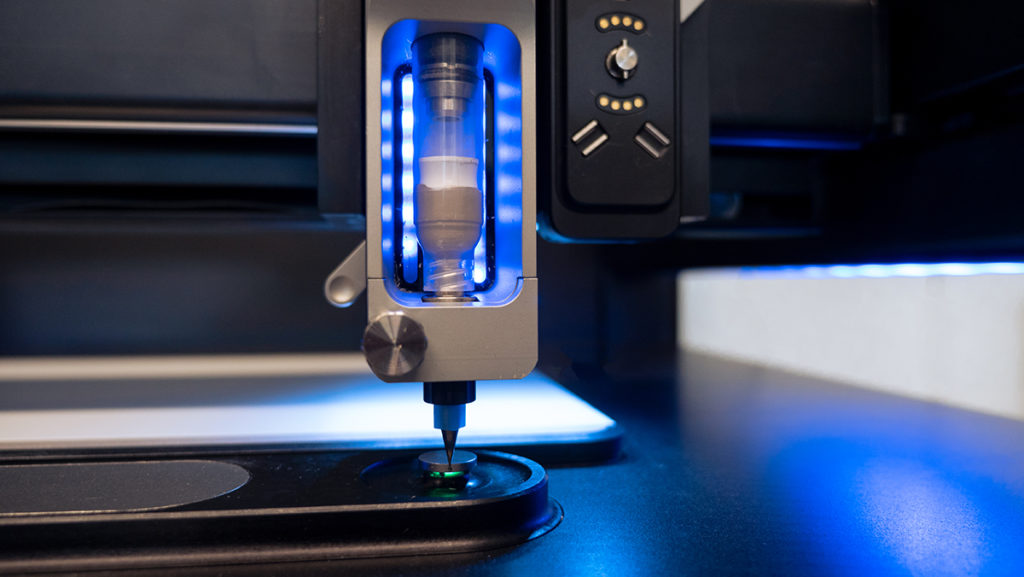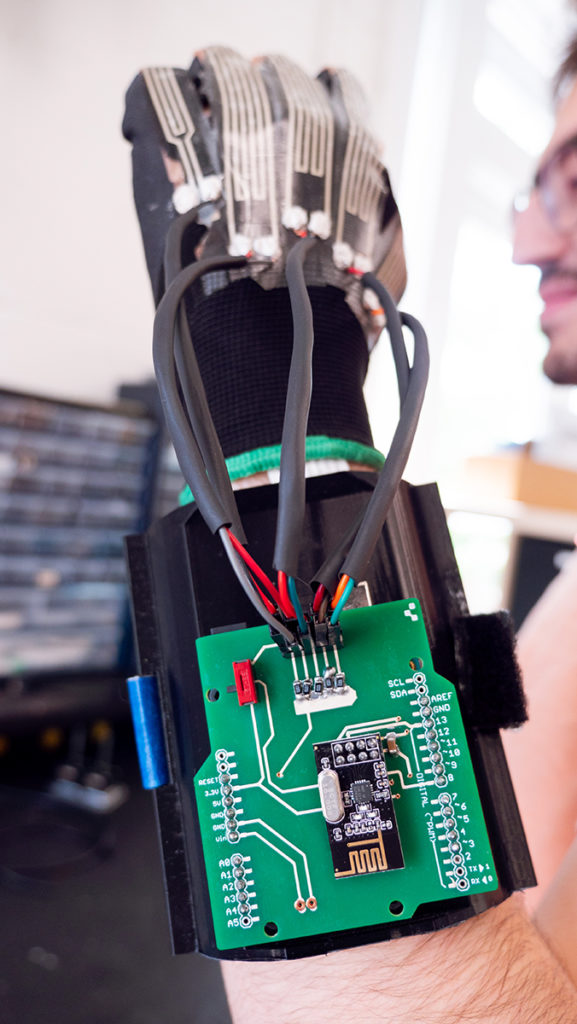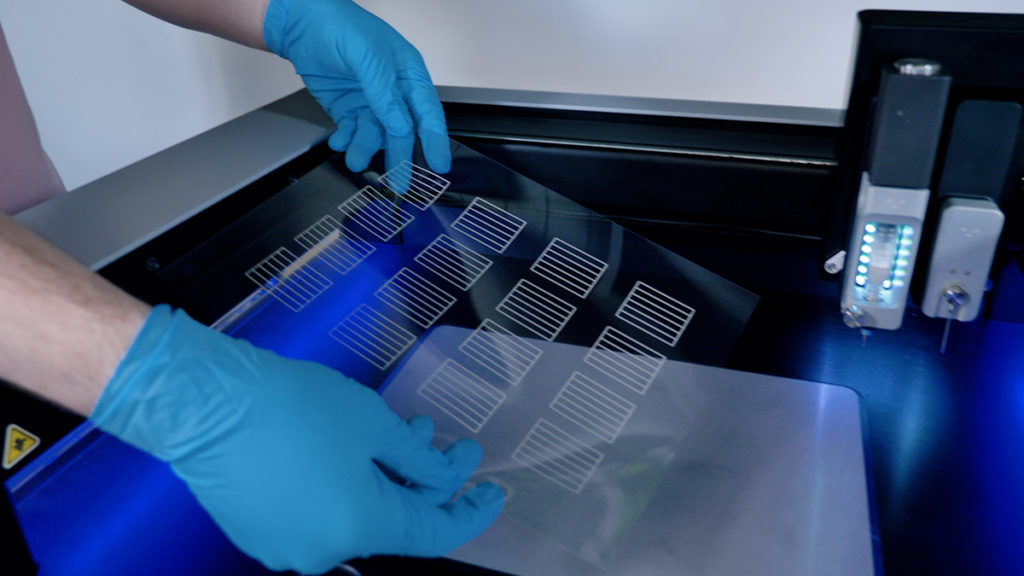Electronics 3D printing is one of the most exciting segments in the additive manufacturing (AM) sector. Still in its nascent stages, there are only a handful of companies manufacturing electronics 3D printers, meaning there are plenty of new developments with the potential to disrupt manufacturing altogether. The latest comes from Ontario-based Voltera, which has just announced its latest system, NOVA, designed to 3D print soft, stretchable, and conformable electronics.
At a virtual press briefing, Voltera unveiled its new 3D printer, as well as some of the use cases being explored for its electronics 3D printing technology.
From PCB Printing to 3D Printing Soft Electronics
Voltera was established in 2013 with the goal of making PCB prototyping easier. Its first product, the V-One, was one of the first direct-ink write printers for traditional rigid electronics. Capable of printing traces with conductive ink and dispensing solder paste, the machine was taken up by such prestigious users as Princeton, NASA, Intel and MIT who have used it for such applications as making electronics for satellites.
As the company shipped thousands of V-One printers globally, the Voltera team realized that users were experimenting with the machine in novel ways. They were attempting to print circuits on aircraft or even human skin. After taking in all of the feedback from its community, Voltera created NOVA.
NOVA represents the next stage in Voltera’s technological development by expanding the types of substrates on which circuits can be printed and introducing a number of key upgrades. Thanks to an 8”x11” titanium vacuum table and threaded mounting grid, NOVA users can print onto rigid and flexible materials. This means that it’s possible to not only create clothing that can measure a wearer’s heart rate but even print on-skin sensors to monitor a person’s vital signs.
 The Smart Dispenser on NOVA.
The Smart Dispenser on NOVA.The latest machine also features several features that build significantly on Voltera’s predecessor technology. This includes real-time, closed-loop pressure feedback, as well as an integrated vision system for aligning, printing, and inspecting with machine vision and AR overlay print preview. The browser-based print software is meant to be user friendly, while the hardware’s modular design allows users to quickly swap printer modules. These modules include the Smart Dispenser head for depositing conductive inks and the Smart Probe for registering the substrate on which the ink is being printed. This allows NOVA to print consistently even on surfaces that aren’t flat.
The Possibilities of Integrated Electronics
Gerd Grau, director of EA-M Lab, York University, explained how his students are researching the printing of biomedical tattoos and carbon fiber composites with integrated electronics. While the V-One enabled this work initially, NOVA’s ability to control how the ink flows with its built-in pressure sensor makes it significantly easier to print on these varied substrates.
 Stretchable, wearable heater printed by a student.
Stretchable, wearable heater printed by a student.Grau spoke about how the technology would change the world of electronics by directly integrating electronics into the body of devices themselves. Using the electrically conductive carbon fiber research as an example, he pointed out how it would be possible to measure the strain throughout an aircraft wing to determine if there is any damage.
“With traditional electronics you have a substrate, a PCB, and it’s basically just sitting there. You put your electronics on it and then maybe you take that and slap it onto something else,” Grau said. “Where Voltera’s technology will shine is in applications that were not possible before. You shouldn’t try to compete with silicon chips or PCBs. You should try to make something that’s impossible with those technologies. It really is a new way of looking at electronics…This new approach towards electronics that [Voltera] is on the forefront of is turning electronics into a real part of the world around us.”
 A robotic hand with printed circuits.
A robotic hand with printed circuits.Other speakers at the virtual event included Andrew Bambach from ACI Materials, who discussed the use of NOVA as a means of prototyping electronics with the same inks that would be used in end manufacturing. MIT’s Alex Kashkin elaborated on his research into field emission electron sources. David Holdsworth, of Western University, is using Voltera’s technology to develop biomedical imaging techniques.
The Additive Electronics Market
As an early player in the world of additive electronics, Voltera is uniquely positioned to profit from the sector’s future growth. Unlike other companies in the space, it is one of the few that has developed a desktop electronics 3D printer, alongside BotFactory. In contrast, Nano Dimension and Optomec equipment is much more expensive and geared toward actual end manufacturing of electronics. The extent to which that is happening is quite secret, but, based on Optomec’s experience with Lite-On Mobile, we might assume that it’s more widespread than anyone is willing to admit.
 Circuits printed with NOVA.
Circuits printed with NOVA.It is quite possible that Apple is using Optomec’s Aerosol Jet for research and development, if not more. And, when a company like Apple explores one version of a technology, we might assume that it is looking at every version of that technology. After all, what’s one more 3D printer for one of the world’s largest companies? We might then assume that these tech giants have at least one printer from Optomec, Nano Dimension, nScrypt, Voltera and the other firms in the space.
Because the V-One retails for less than $6,000, it also has the advantage of being comparatively affordable. Schools and labs around the world are already using it, so we can expect that this trend will continue with the NOVA. Moreover, those users will be able to greatly expand their work now with a much wider variety of substrates, greater ease-of-use, and improved precision and overall quality with NOVA.
All images courtesy of Voltera.
Subscribe to Our Email Newsletter
Stay up-to-date on all the latest news from the 3D printing industry and receive information and offers from third party vendors.
Print Services
Upload your 3D Models and get them printed quickly and efficiently.
You May Also Like
Consolidation in AM: How 2025 Is Shaping the Industry’s New Normal
The first half of 2025 has been marked by a clear shift in the additive manufacturing (AM) industry. Companies are no longer just focused on developing new tech by themselves....
Etsy Design Rule Change Reduces Selection of 3D Printed Goods
Online marketplace Etsy has implemented a rule change requiring all 3D printed goods on the site to be original designs. The update to the site’s Creativity Standards states, ¨Items produced using...
U.S. Congress Calls Out 3D Printing in Proposal for Commercial Reserve Manufacturing Network
Last week, the U.S. House of Representatives’ Appropriations Committee moved the FY 2026 defense bill forward to the House floor. Included in the legislation is a $131 million proposal for...
Transforming From Tourist to Native: Duro CEO Michael Corr Explains Why the Company Rebuilt its PLM Software on AI
In these early innings of the AI boom, many market analysts have expressed concern that AI spend has gotten too far ahead of the technology’s proven ability to deliver significant...
































